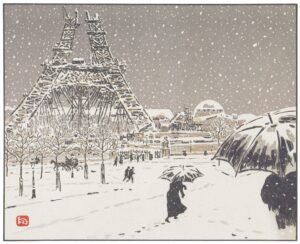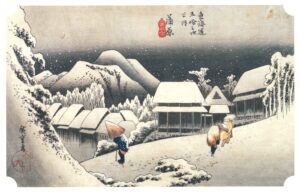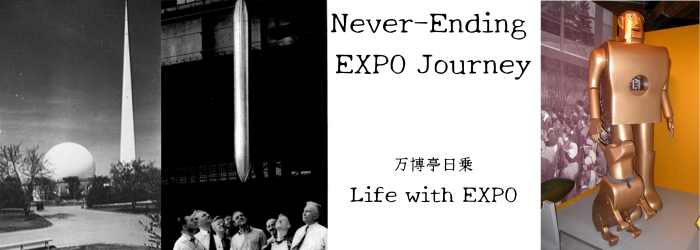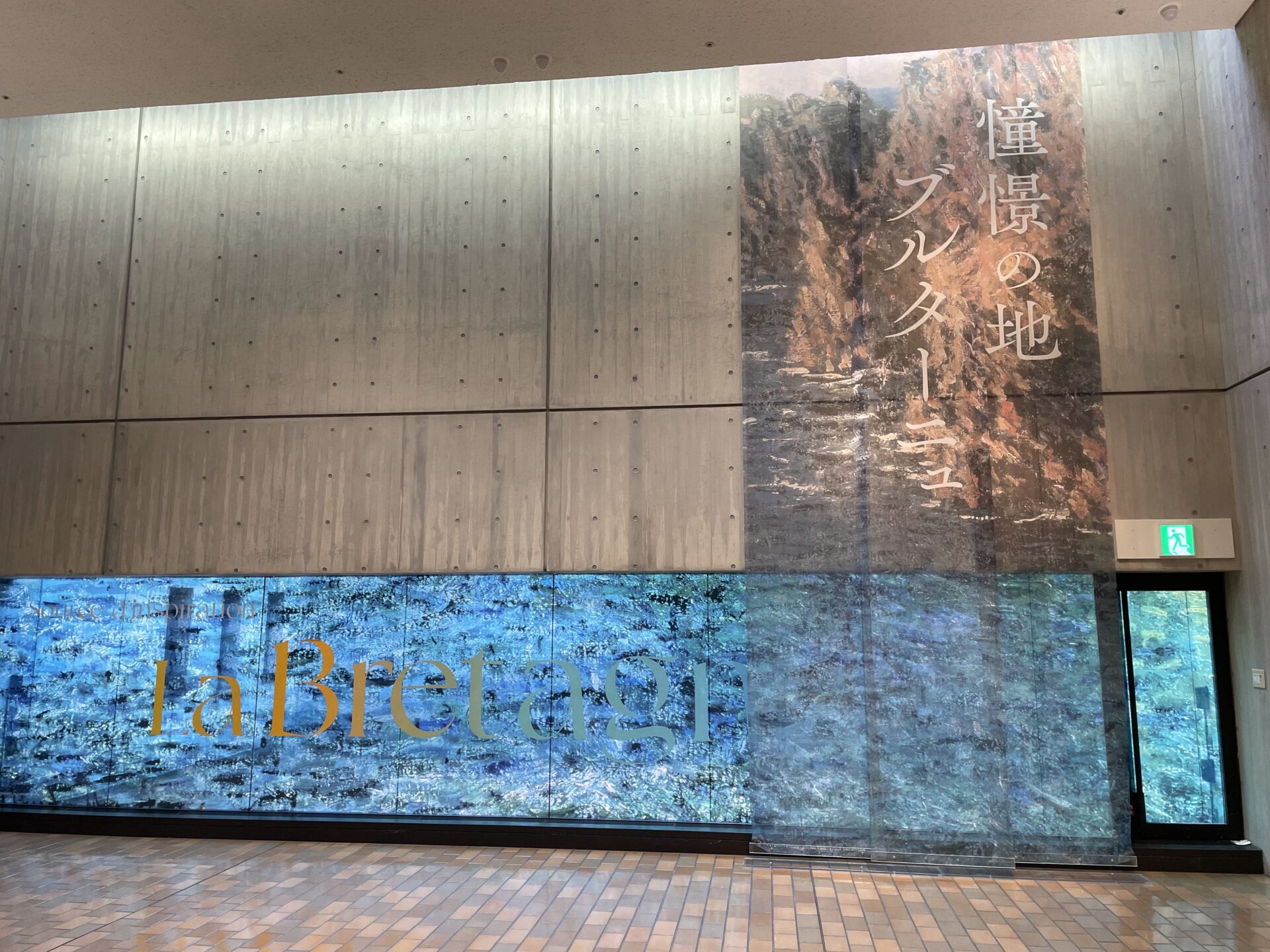Well, this time is also the ” LA BRETAGNE Exhibition” held at the National Museum of Western Art.
Last time, I mainly introduced Gauguin‘s exhibition at Café Volpini at the 1889 Paris International Exposition.
However, there are still several exhibits related to the Expo in this exhibition.
Henri Rivière and the Eiffel Tower
The first one is Henri Rivière (1864-1951), a French painter and printmaker. Henri Riviere was influenced by Japanese ukiyo-e, especially Hokusai and Hiroshige, and he himself produced various ukiyo-e-style prints.
A famous work related to the World Exposiiton is Thirty-six Views of the Eiffel Tower, which was created based on the theme of the Eiffel Tower, which was built as part of the 1889 Paris World Exposition. Of course, it must have been influenced by Hokusai’s Thirty-six Views of Mount Fuji.
Among them, I especially like the work “Eiffel Tower under construction, view from the Trocadéro Palace“. This work was exhibited in the “Modernité exhibition” at the Tokyo Metropolitan Art Museum from January 14th to March 31st, 1996 (…already long time ago…).
In that exhibition, a total of four works from “Thirty-six Views of the Eiffel Tower”, including this one, were exhibited.
In addition, Henri Rivière also left some photographs called “Photographs of the Eiffel Tower under construction”, which were also exhibited at that ” Modernité exhibition”. It can be seen that Rivière was paying attention to the Eiffel Tower as his favorite theme.
By the way, this “Eiffel Tower under construction, view from the Trocadéro Palace”, doesn’t it look like Utagawa Hiroshige’s “Kanbara: Night Snow”?
I think that the appearance of several people silently walking in the snow with umbrellas is very similar. The title of the series “Thirty-six Views” was inspired by Hokusai, but the motif of this painting was probably inspired by Hiroshige.

アンリ・リヴィエール『建設中のエッフェル塔、トロカデロ宮からの眺め』(『エッフェル塔三十六景』の一枚)
Henri Rivière ”Eiffel Tower under construction, view from the Trocadero” (one of “36 views of the Eiffel Tower”)

歌川広重『東海道五十三次 蒲原 夜の雪』
Utagawa Hiroshige “Kambara Night Snow, from Fifty-three Stations of the Tokaido series”
Henri Rivière and the 1900 Paris Exposition
Well, Henri Rivière, one of the representative painters of Japonisme, his works are also exhibited in this ” LA BRETAGNE Exhibition “.
Moreover, it was exhibited at the 1900 Paris Exposition, where it won a gold medal in the print category. This work is titled “From the series ‘Breton Landscapes’: Pardon Festival at the Church of Sainte-Anne-la-Palud” (1892-93, Color woodcut, National Museum of Western Art).
I quote from the commentary by Aoi Yamamasu in the catalog;
*
Cat.73 (author’s note: this work) is a masterpiece that required 50 woodblocks. It was exhibited at the 1900 Paris Exposition and won a gold medal in the print category. It can be seen that the five-sheet format was inspired by ukiyo-e prints such as Kiyonaga’s ‘Okawabata Evening Cool.’
*
The impression of this painting is somewhat dark. While pilgrims silently form a procession and walk along the walls, there are people who are thought to be beggars sitting. Is the wall in the back a church? What kind of festival is this “Pardon Festival”? As the name “Pardon” suggests, it seems to be a festival in the Brittany region that asks for forgiveness, but please check the wiki for details.
I was also surprised to find out that this “From the series ‘Breton Landscapes’: Pardon Festival at the Church of Sainte-Anne-la-Palud” is in the collection of the National Museum of Western Art (Seibi).
I thought the fact that Seibi owns the gold prize-winning work of the 1900 Paris Exposition should be known more widely.
The exhibition also includes several works by Henri Rivière. All of them depict Brittany, but the colors are brighter than those of Pardon Festival, which is reminiscent of Japanese ukiyo-e prints.
Henri Rivière and Tadamasa Hayashi
Also interesting as document are the picture postcards and letters addressed to Tadamasa Hayashi from Henri Rivière. All of these are explained “held in the Tokyo National Research Institute for Cultural Properties (deposited at the National Museum of Western Art)”, so they also exist in Japan.
Hayashi Tadamasa (1853 – 1906) studied French at Daigaku Nanko (later Kaisei School, then the University of Tokyo). In 1878, he was hired by the Kiryu (or Kiritsu) industrial and commercial company for the 3rd Paris International Exposition and went to Paris.
After that, he was temporarily employed by Mitsui & Co., Ltd. in Paris, but later worked as an art dealer in Paris and made efforts to convey Japanese culture to Europe.
At the time of the 5th Paris World Exposition in 1900, he was appointed as the “Secretary-General’‘ (usually a vice-ministerial position in the Ministry of Commerce and Industry) in charge of overseeing Japan’s exhibitions. So he is also deeply connected to World Exposition.
It seems that Tadamasa Hayashi had asked Henri Rivière to create some works for his house in Tokyo, but it was cancelled due to the death of Tadamasa Hayashi. The five letters and picture postcards exhibited here were written between July 15, 1903 and July 25, 1905.
In 1901, Hayashi returned to Japan after completing the remaining duties of the 1900 Paris World Exposition. However, it was in 1905 that he settled his living base in Paris and finally returned to Japan.
Therefore, these letters and picture postcards can be said to have been exchanged during the time when he was going back and forth between Japan and Paris.
Shortly after returning to Japan, he fell ill and died on April 10, 1906, at the young age of 53. That’s probably why the request to Henri Rivière was also cancelled.
By the way, at the “Modernité Exhibition” held in 1996, a work by Alberto Bartolomé (1848 – 1928) titled “Tadamasa Hayashi’s Mask” (1892, bronze, reddish patina) was on display. This work is a reddish “mask”, but if you look at Tadamasa Hayashi’s photograph, you can see that it was produced in a fairly realistic manner. This suggests that Hayashi had a close friendship with various artists in Paris.
In this way, the ” LA BRETAGNE Exhibition ” unexpectedly contained many items related to the World Exposition.
If you are interested in the history of the World Exposition, and expecting EXPO 2025 Osaka, Kansai, Japan, why not take this opportunity to visit this exhibition?



